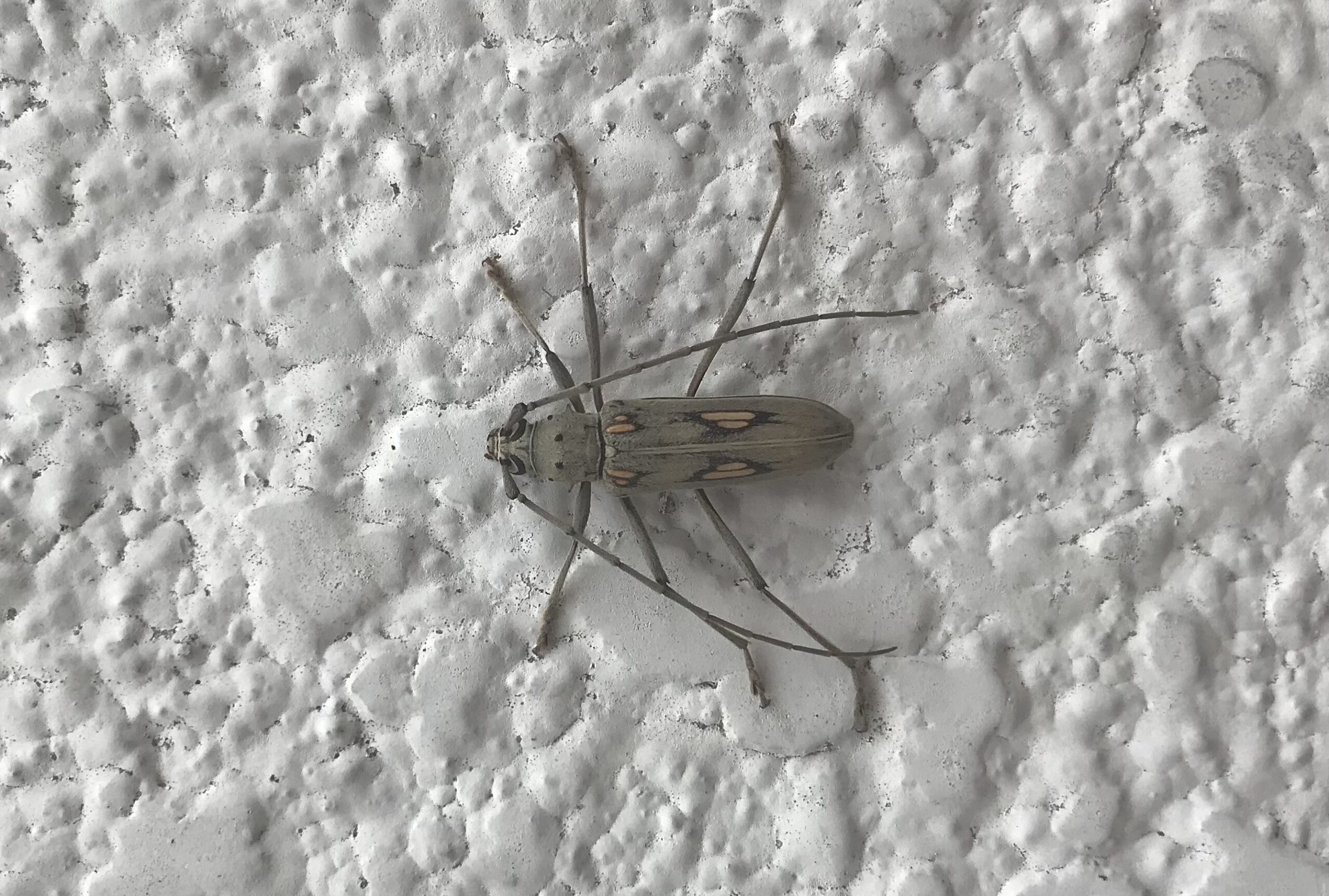
To whom It may concern,
It’s a small world after all.
March 7, 2022, Week 08 – Isla De Santa Cruz, Ecuador
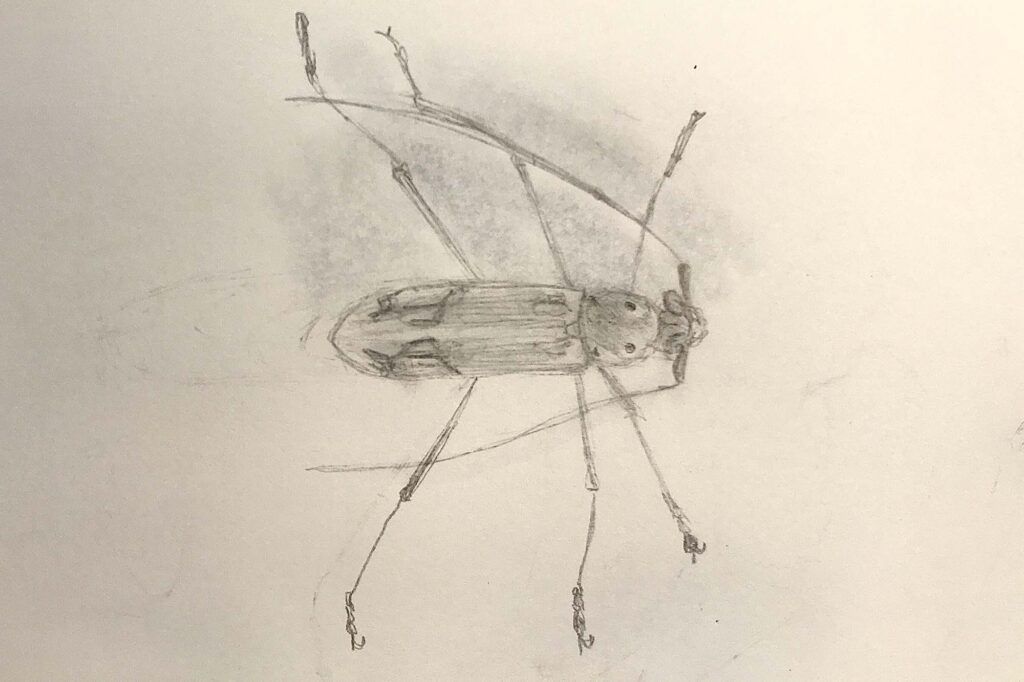
Amongst huge frigate birds and giant tortoises, smaller organisms are often forgotten or considered less interesting than some wildlife. Every day, walking around town, to the beach, the station, or on our patio outside, our group constantly points out ants, carpenter bees, geckos, millipedes, katydids and grasshoppers. (Readers should note that optimal hiding places for geckos include but are not limited to the following: under cabinets, under the refrigerator, on top of the sink faucet, on windows, inside any and every applicable light fixture, behind doors, under chairs, on the celling, etc.) Often vials of odd-looking assassin bugs, or iridescent blue wasps appear on top of my sketchbook (courtesy of the field crew) to be studied under a microscope and illustrated.
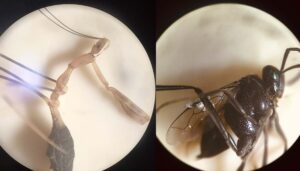
In addition to the organisms we find, other scientists tell us about the tiny life they study. For example, these weevils are studied by Andrea Sequeira:
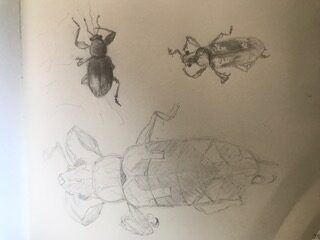
A walk to the beach is accompanied by horseflies which bite very hard! Though they are interesting to look at with their giant green eyes and fuzzy body. Though they are small, they are mighty!
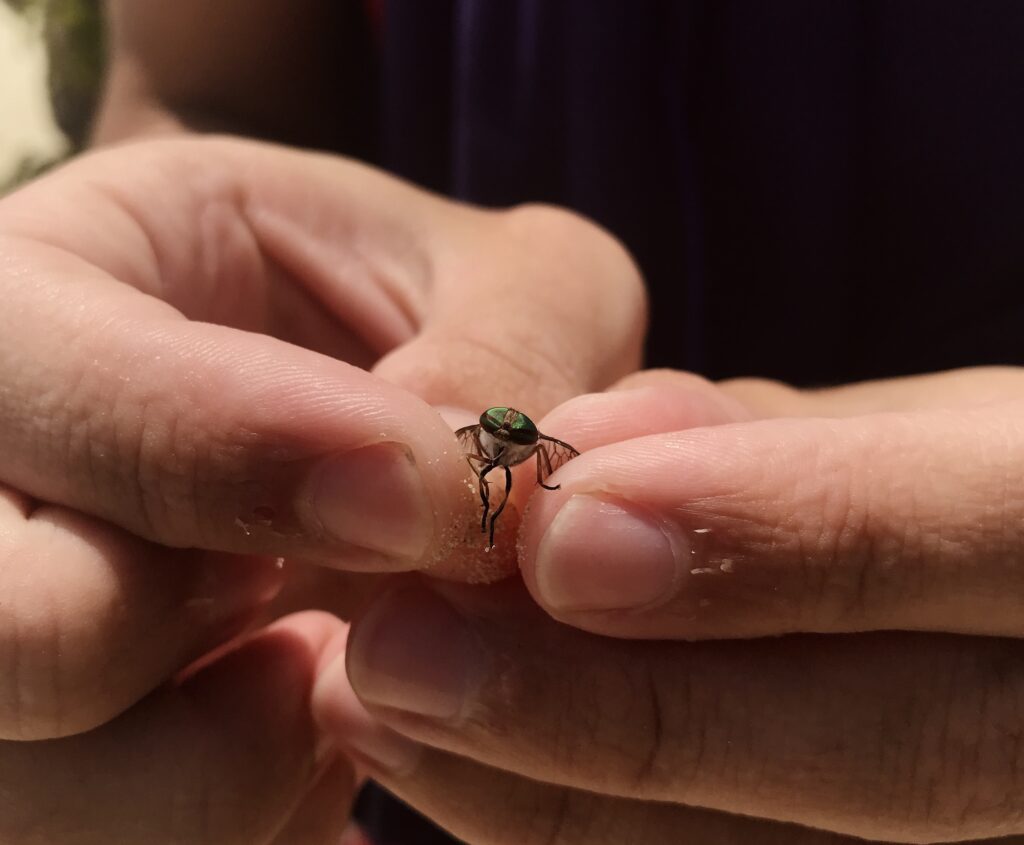
Of course, Philornis Downsi, which we are studying in relation to birds, is included in the smaller variety of interesting life. The fly’s life cycle starts off as an egg. When the worm-like larvae hatches, it grows until it is big enough to pupate. Similar to a butterfly, the larva makes a house for itself, and lives in the pupal case for around eight days. When the insect emerges from the casing, it’s no longer a squirming larva but an adult fly. The life cycle takes place in a nest, where the larvae feed on blood. Then the next generation of flies will repeat the cycle.
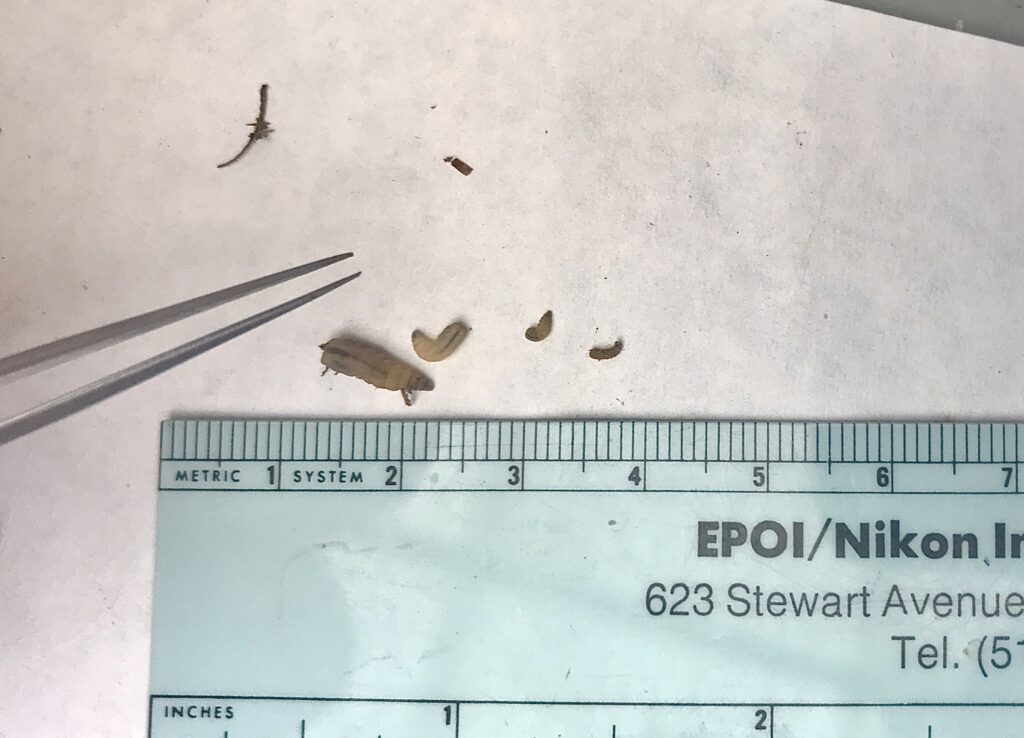
Part of what makes our field crew so much fun to be around are the things they observe. Different backgrounds and adventures make way for so much to talk about while we find insects amongst the giant life. We point out so many little organisms every day that it’s hard to keep track! Everything is so interesting, and so much fun to watch, I’m having so much fun
learning about all of it.
We’ll leave off with a question from a close friend in Utah!
From Hawa:
Question: I am wondering if you are going to go to a different town or island, and if so, are you going to continue this blog?
Answer: Hi Hawa, we aren’t going to any other islands overnight, but we’re going on a day trip to Bartholome where we’ll snorkel, and come back to Santa Cruz afterwards. The last week of our trip will be spent in the Amazon Basin at a research station called Tiputuni. I’m not sure whether I’m going to continue the blog that week because we won’t be in the Galapagos or doing field work, but I’ll tell you all about it when we get home! Thanks for the question! See you in a few weeks!
Thanks for reading, everyone!
-Nora
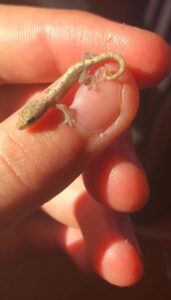
If you are interested in following our expedition, check for new letters each week on the Project Landing Page, where you can find blog posts, and ask questions. 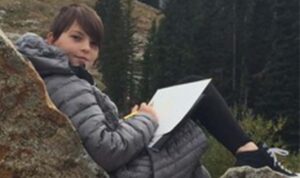
Read all past letters through these links:
#1 #2 #3 #4 #5 #6 #7
